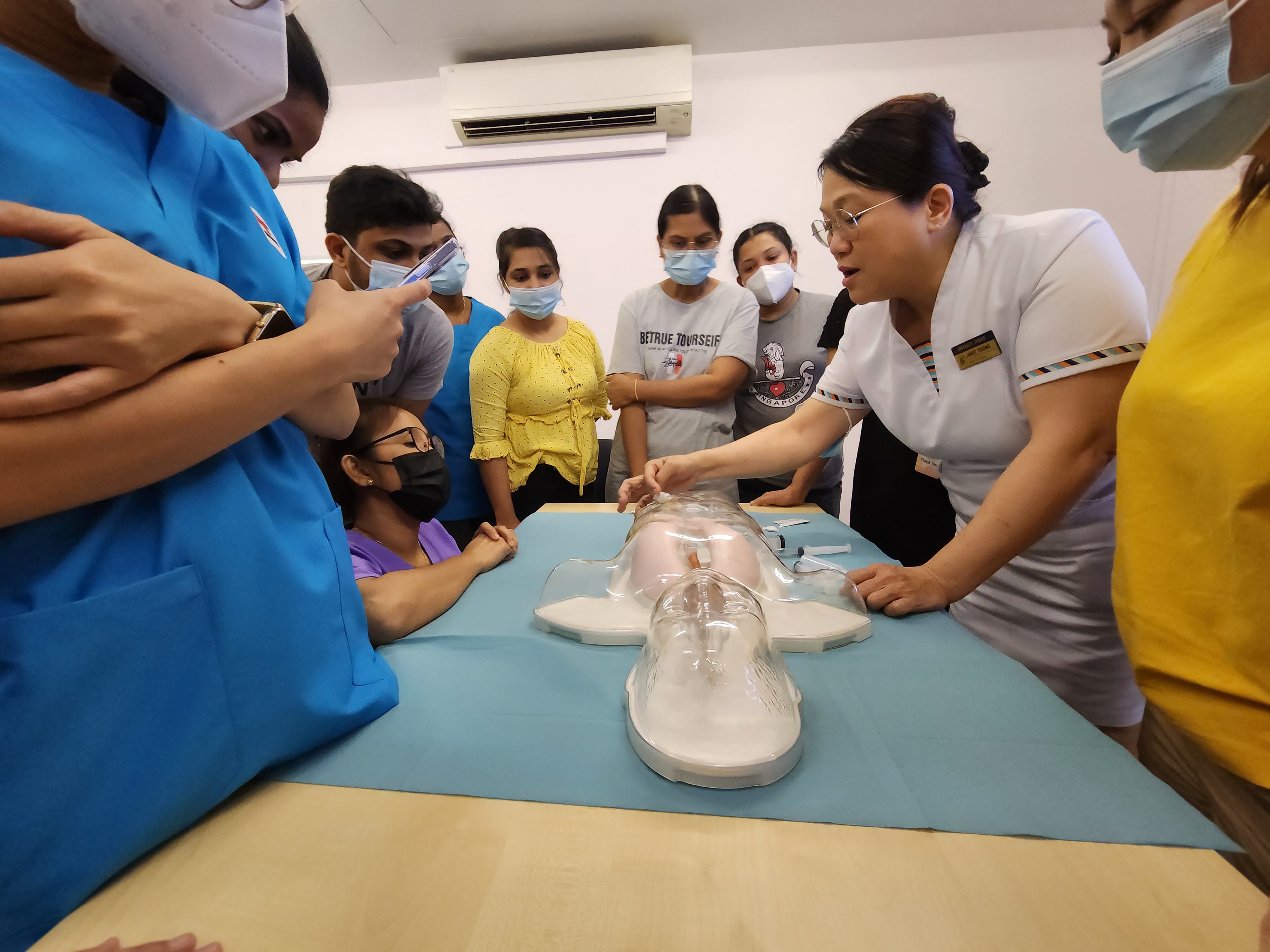
Twenty-six caregivers and employees of the Red Cross Home for the Disabled (RCHD) attended a Percutaneous Endoscopic Gastrostomy (PEG) workshop conducted at RCHD on 17 and 22 August 2023. Ms Janet Chong Ngian Choo, a Nurse Clinician in charge of PEG at the Singapore General Hospital, conducted the training.
For the uninitiated, PEG is a minimally invasive surgical procedure carried out in hospitals. Under mild sedation, a PEG tube is inserted into the stomach through the abdominal wall. This provides nutritional feeding in instances where oral intake is not possible. The subsequent replacement of the PEG tube can be carried out at a PEG clinic or even at the Home by trained individuals.
Covering the theory as well as the hands-on session, Ms Chong discussed the possibility of transitioning the residents from Nasogastric tube (NGT) feeding to PEG feeding.
"There are several benefits of PEG feeding vis-a-vis NGT tube feeding. PEG feeding enhances the well-being of the residents, residents may experience less discomfort, be less time-consuming, potentially decrease aspiration pneumonia incidents, consume a greater variety of feeds, reduce concerns of dislodgement, and mitigate blockage risk," said Ms Chong.
Benefits of PEG Feeding for RCHD's Residents
| Benefits | Description |
| Enhanced Well-being | Residents may experience improved appearance, better oral care, and reduced facial redness/abrasion from adhesive tape used to secure the NGT. |
| Experience Less Discomfort, Less Time-consuming | Residents may experience less discomfort as there is reduced trauma to nasal passages from repeated NGT insertion and the NGT is changed monthly while the PEG is changed half-yearly or yearly. |
| Health Considerations | While not fully confirmed, recent studies suggest a potential decrease in aspiration pneumonia incidents with PEG feeding. |
| Variety of Feeds | A trained employee can feed greater varieties of feeds (puree / blended fluids etc) to a resident via a PEG tube. |
| Reduced Concerns about Dislodgement | PEG reinsertion can be performed by trained Staff Nurses and Nursing Aides in the Home setting. There will be reduced episodes of sending residents to A & E for tube dislodgement. |
| Blockage Risk Mitigated | When employees are equipped with the knowledge to handle the PEG, even smaller lumens will not be prone to blockage from medication. |
To facilitate the seamless implementation of PEG insertion, it is integral for RCHD to
| Description | |
| Provide Staff Training |
|
| Refer the Right Candidates (residents) and the Referral Process |
|
| Prepare Supplies |
|
| Obtain consent from Residents' Next-Of-Kin |
|

